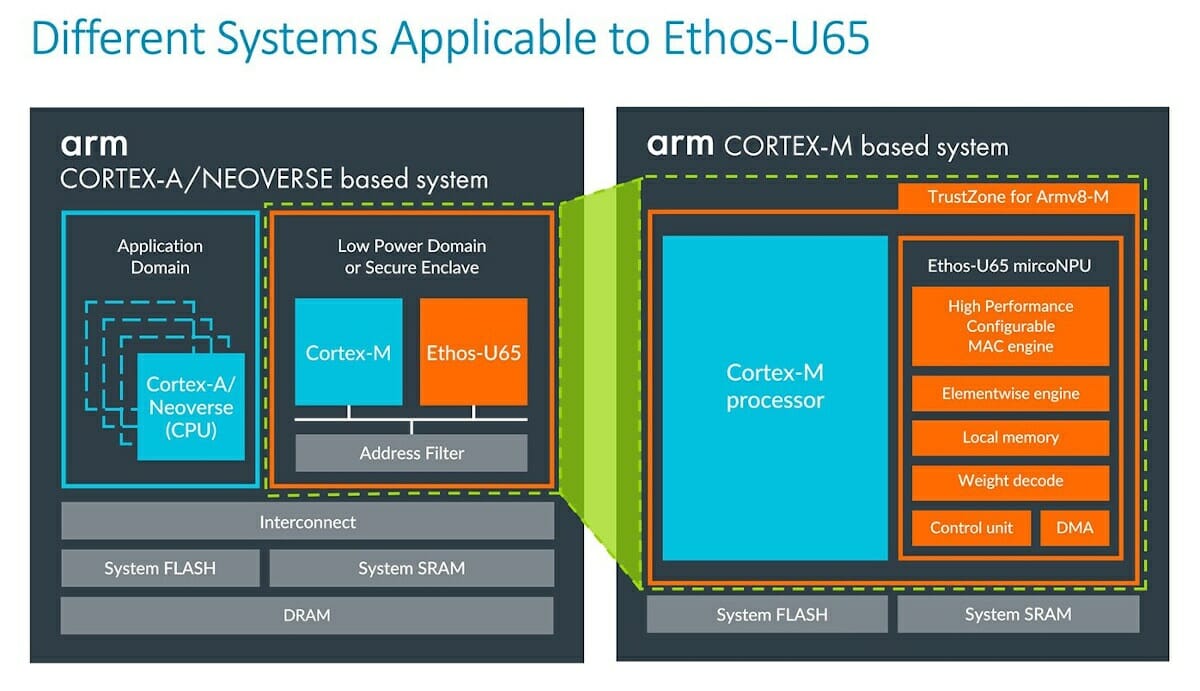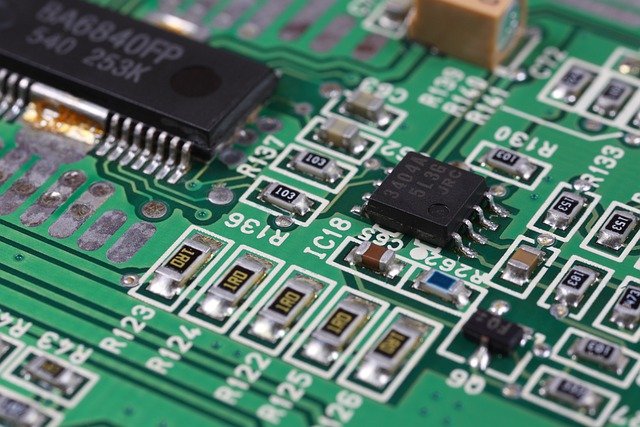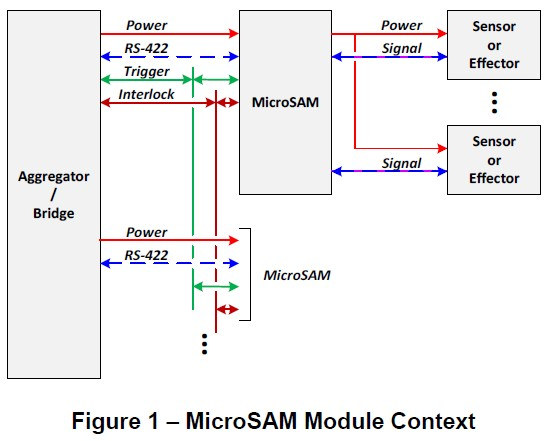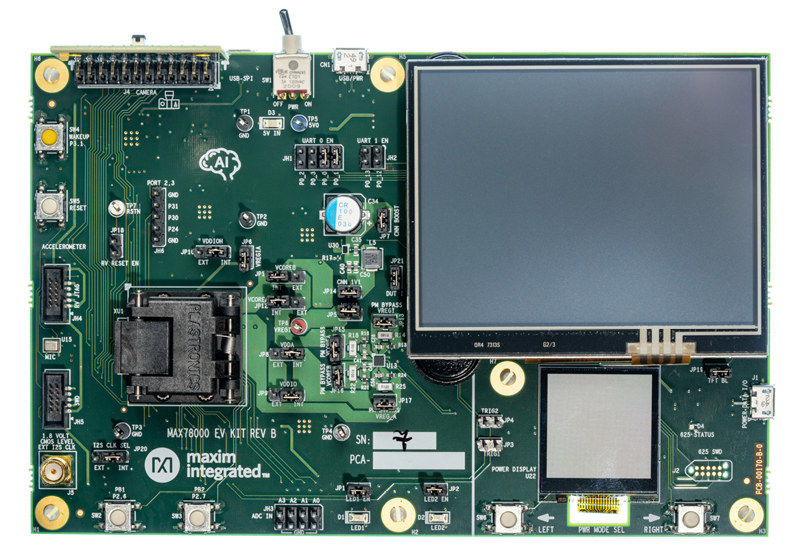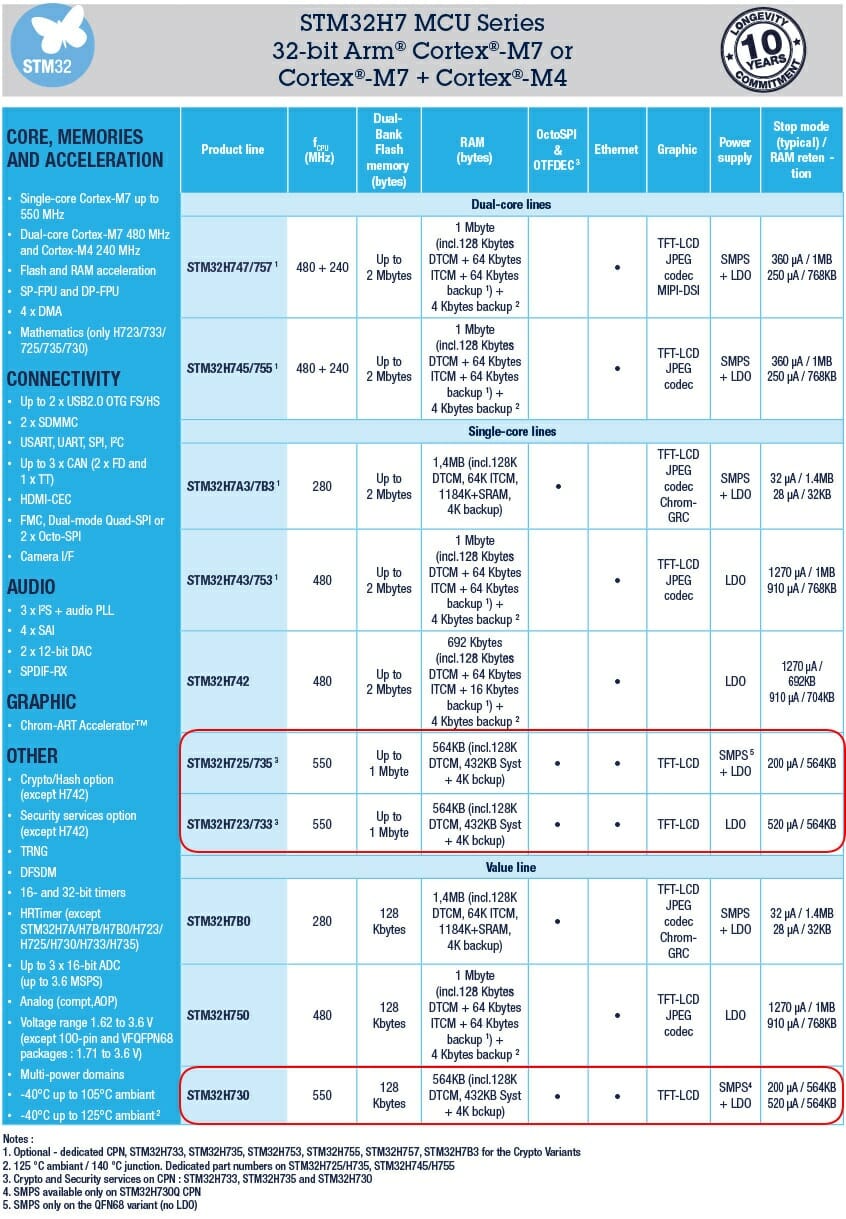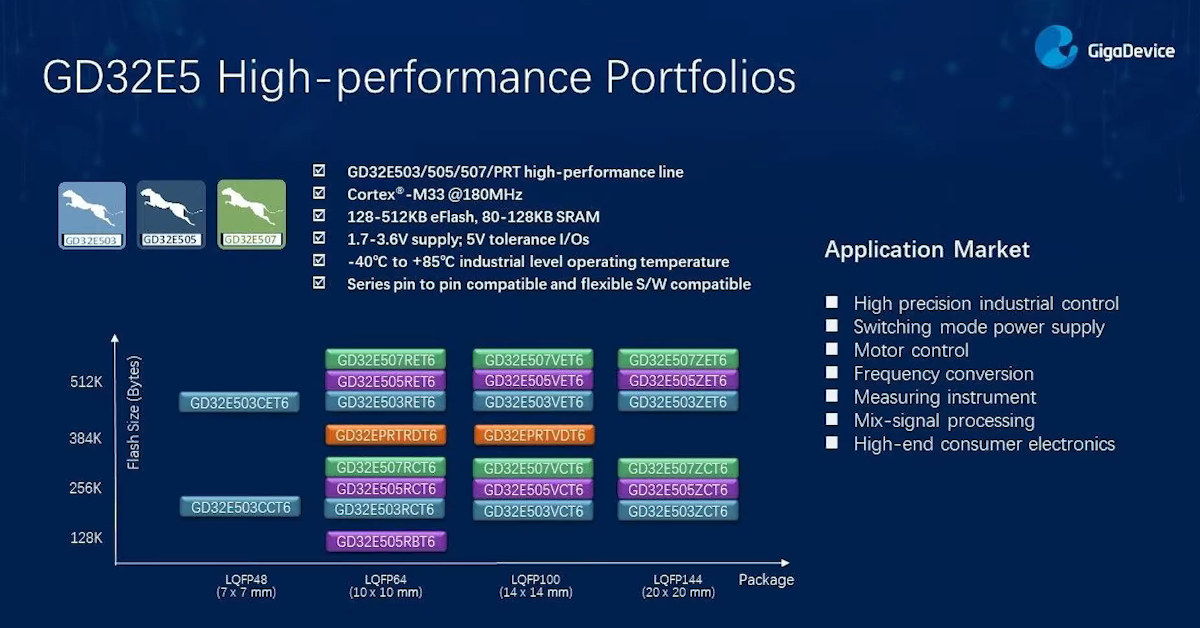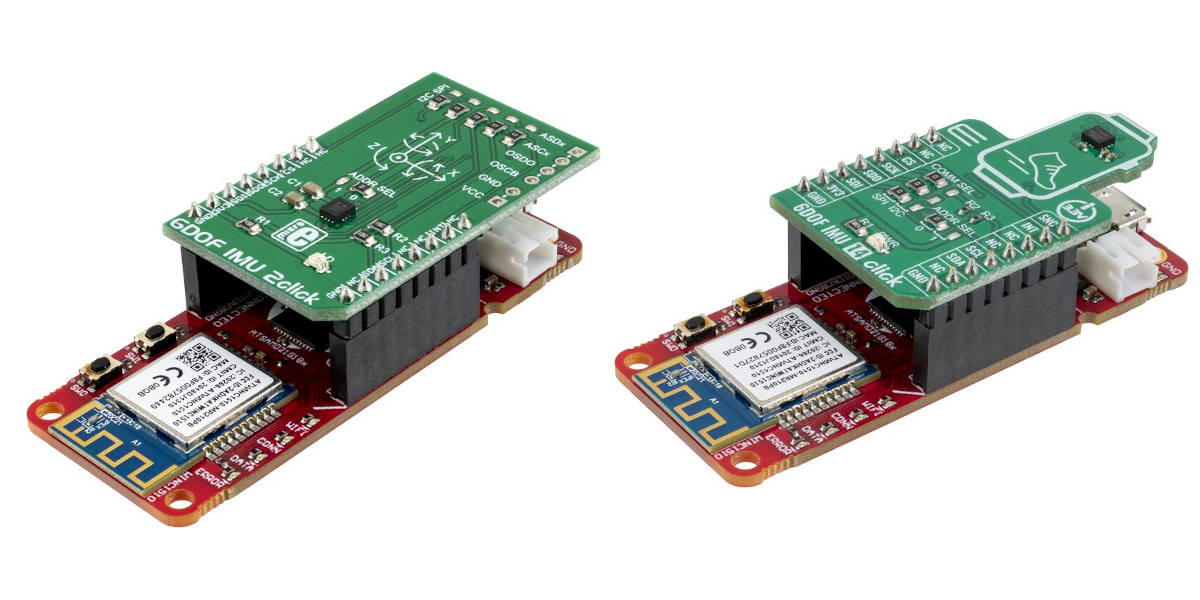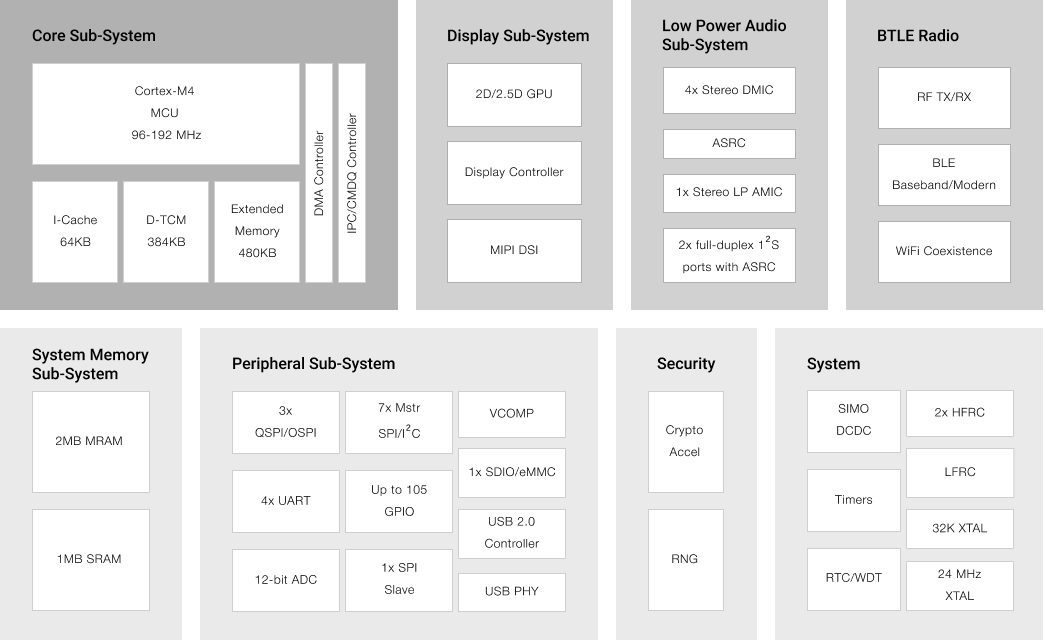Arm introduced their very first microNPU (Micro Neural Processing Unit) for microcontrollers at the beginning of the year with Arm Ethos-U55 designed for Cortex-M microcontrollers such as Cortex-M55, and delivering 64 to 512 GOPS of AI inference performance or up to a 480x increase in ML performance over Cortex-M CPU inference. The company has now unveiled an update with Arm Ethos-U65 microNPU that maintains the efficiency of Ethos-U55 but enables neural network acceleration in higher performance embedded devices powered by Arm Cortex-A and Arm Neoverse SoCs. Arm Ethos-U65 delivers up to 1 TOPS, and as seen in the diagram enables features that can not be done with Ethos-U55 including object classification and real-time classification. Compared to Ethos-N78 NPU, the new microNPU offers less AI performance, but a significantly higher efficiency although AFAIK no quantified by Arm. The company says the development workflow remains the same with the use of the […]
CloudBEAR BM-310 RISC-V MCU core for IoT applications
In the pool of 32-bit RISC-V microcontroller cores (E20 by SiFive, VEGA ET1031 by C-DAC), CloudBEAR showcased its 32-bit small and efficient MCU core – BM-310 at RISC-V GLOBAL FORUM 2020. CloudBEAR works on providing services like processor IP customization, support for RISC-V ISA extensions, product integration within a system-on-chip, and configurable instruction and data cache. Let’s first look into the CloudBEAR processor IP portfolio. It has three different product lines- BM series, BR series, and BI series. First, the BM series targets small and efficient MCUs cores. Second, the BR series targets fast and compact embedded cores. The third and most important BI series is about Linux capable application cores. In this article, we will look into the details of BM-310, which is the RISC-V MCU core for embedded and IoT solutions. BM-310 Architecture As RISC-V is a modular instruction set, extensions are optional for the developer. BM-310 architecture […]
MicroSAM System-on-Module Standard Targets Microcontrollers, IIoT Sensors
There are plenty of system-on-module standards, but those mostly target application processors such as Intel/AMD x86 processors or Arm Cortex-A based SoCs. PICMG has now added a new IIoT-related open standard with MicroSAM specifying a 32x32mm module for microcontrollers and industrial IoT sensor nodes. MicroSAM standard highlights: Reliable RS422 industrial-grade communications PWM output for motion control applications Direct connectivity to a variety of sensor types (analog voltage, analog current, digital) Low power consumption Power filtering and signal conditioning for embedded installations Dimensions – 32mm x 32mm Latching connectors for secure connectivity Full industrial operating temperature range from -40°C to +85°C One of the advantages often cited for traditional SoMs is that customers don’t have to take care of the complex layout around the processor and RAM, and can simply create a 2-layer baseboard to insert the 6-layer SoM into it. This lowers the development costs and time-to-market. But it’s not […]
MAX78000 RISC-V & Cortex-M4F MCU enables IoT artificial Intelligence in battery-powered devices
Now even endpoints like sensors are capable of running basic artificial intelligence workloads thanks to microcontroller-class chips with built-in AI accelerators or instructions such as Kneron KL720 Arm Cortex-M4 AI SoC, GAP8 RISC-V IoT processor, or Cortex-M55 MCU core coupled with Ethos U55 MicroNPU. Maxim Integrated has now launched its own AI capable microcontroller with MAX78000 combining a Cortex-M4F core, a 32-bit RISC-V core, and a CNN accelerator enabling AI inferences at less than 1/100th the energy or 100 times the speed of software solutions making especially suited for battery-powered AI applications. MAX78000 specifications: Ultra-Low-Power microcontrollers Arm Cortex-M4F core with FPU Up to 100MHz with 512KB Flash and 128KB SRAM 32-Bit RISC-V ultra-low-power co-processor up to 60MHz Neural Network Accelerator optimized for Deep Convolutional Neural Networks (CNN) 442k 8bit Weight Capacity with 1,2,4,8-bit Weights Input Image Size up to 1024 x 1024 pixels Network Depth up to 64 Layers Layer […]
New STM32H7 Cortex-M7 MCUs Clock at 550 MHz, Feature Octal SPI Flash and Ethernet Interfaces
STMicro launched STM32H7 single-core Cortex-M7 microcontroller family a while ago, followed by some dual-core Cortex-M7/M4 models, with most clocked up to 480 MHz. The company has now announced five faster parts clocked at up to 550 MHz with STM32H723, STM32H733, STM32H725, STM32H735, and STM32H730 which STMicro claims is “the fastest core speed in the market among MCUs that integrate Flash storage on-chip to run deeply embedded applications”. The embedded flash storage is important, as you may now NXP i.MX RT1170 Cortex-M7/M4 crossover processor can reach up to 1 GHz but does not include flash storage. Key differences in STM32H7 550 Mhz MCUs We’ve highlighted the five new microcontrollers in the table above, and beside the higher 550 MHz frequency delivering 2778 CoreMark and 1177 DMIPS, we can see those are the only parts that support both OctoSPI flash and Ethernet, and all five parts are designed for HMI applications with […]
GigaDevice GD32E5 Cortex-M33 microcontrollers target motor and industrial control
We first mentioned GigaDevice Semiconductor in 2015 for its STM32-compatible GD32 microcontroller, but last year, the company was brought back to our attention again with its GD32V RISC-V microcontroller with similar features as its GD32 Cortex-M3 model but equipped with a faster and more efficient RISC-V “Bumblebee” core. That does not mean the company has given up on Arm though, as GigaDevice recently announced GD32E5 Cortex-M33 high-performance microcontrollers, manufactured using TSMC’s Low Power 40nm process, and designed for embedded systems such as high-precision industrial controllers, motor control applications, digital power supplies, measuring instruments, mixed-signal processing applications, and industrial/consumer controllers. GD32E5 MCU key features & specifications: MCU Core – Arm Cortex-M33 Armv8-M core clocked at up to 180MHz with DSP instruction set and single-precision FPU. Memory – 80KB to 128KB SRAM Storage – 128KB to 512KB on-chip flash, QSPI interface for external storage Peripherals USB 2.0 OTG dual-function controller, including 480Mbps […]
Microchip SAMD21 Machine Learning Evaluation Kits Work with Cartesiam, Edge Impulse and Motion Gestures Solutions
While it all started in the cloud Artificial Intelligence is now moving at the very edge is ultra-low power nodes, and Microchip has launched two SAMD21 Arm Cortex-M0+ machine learning evaluation kits that now work with AI/ML solutions from Cartesiam, Edge Impulse, and Motion Gestures. Bot machine learning evaluation kits come with SAMD21G18 Arm Cortex-M0+ 32-bit MCU, an on-board debugger (nEDBG), an ATECC608A CryptoAuthentication secure element, ATWINC1510 Wi-Fi network controller, as well as Microchip MCP9808 high accuracy temperature sensor and a light sensor. But EV45Y33A development kit is equipped with an add-on board featuring Bosch’s BMI160 low-power Inertial Measurement Unit (IMU), while EV18H79A features an add-on board with TDK InvenSense ICM-42688-P 6-axis MEMS. The photo above makes it clear both SAMD21 machine learning evaluation kits rely on the same baseboard with a MikroBus socket connected to either 6DOF IMU 2click or 6DOF IMU 14 click add-on board from MikroElektronika. Both […]
3µA/MHz Ambiq Apollo 4 MCU Targets Battery-powered IoT Devices with Voice Processing
Ambiq Micro is using sub-threshold voltages under 0.5V to offer ultra-low-power Arm microcontrollers. In 2015, the company launch the Apollo Cortex-M4F MCU with 30µA/MHz power consumption in active mode, which was followed in 2016 by Apollo 2 in consuming just 10µA/MHz, and Apollo 3 (Blue) dropped power consumption to as low as 6µA/MHz against using a Cortex-M4F @ 48 MHz in active mode. The fourth generation of ultra-low-power Apollo microcontroller has now been announced with Apollo 4 and Apollo 4 Blue microcontrollers – the latter adding Bluetooth – halving the power consumption of Apollo 3 at just 3µA/MHz, or ten times less than the original ultra-low-power MCU from the company. Apollo 4 (Blue) specifications and key features: MCU Core – Arm Cortex-M4F core up to 192 MHz (TurboSPOT) with FPU, Memory Protection Unit (MPU), and Secure Boot GPU – 2D/2.5D graphics accelerator with full alpha blending, texture and frame buffer […]


